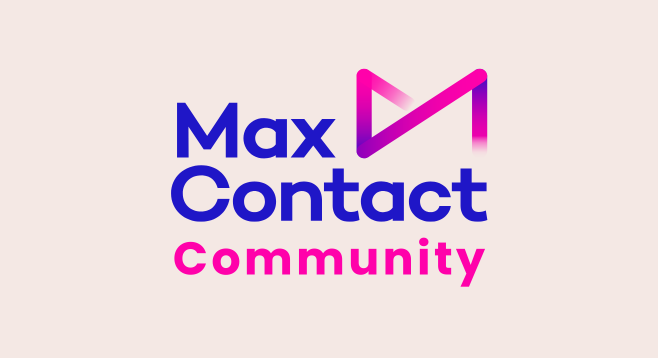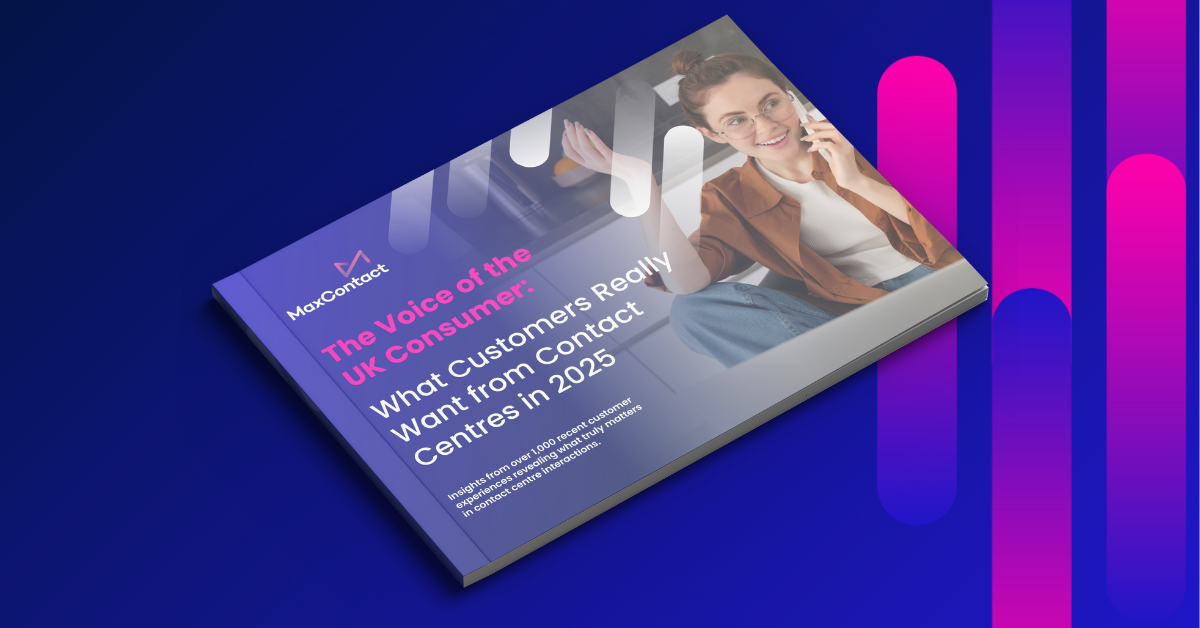How can contact centre teams move with the times and improve contact strategies to push their results to the next level?
In a recent webinar session, Sean McIver, Product Owner at MaxContact, poses this question to two expert guests – Martin Teasdale, Founder of The Team Leader Community and the GOOW Podcast, and Beverley Hughes, Director of Mullard Associates.
They discuss how to improve contact rates in the modern day, why making small changes could be more effective than wholescale transitions and how technology and the pandemic have changed the face of the industry.
Keep reading for the top takeaways, or tune into the webinar below.
What does customer contact strategy mean?
Your customer contact strategy is made up of every mechanism, decision and process that influences how customers are contacted.
It’s the way you interact with customers, the way they interact with you and everything that makes up your approach.
What impacts contact strategies?
MaxContact’s Duty of Care Gap study found that 83% of contact centre workers say work is taking a toll on their mental wellbeing.
Beverley explains that some of this stress is caused by the fact that customers have two priorities – speed and accuracy.
Martin adds that, in the past, agents who struggled with the stresses of the job would leave. But he thinks it’s essential to consider how you can make the pressure lighter.
Sean tells us 75% of people leaving customer contact centres say they’d be more likely to stay long-term if their employer implemented a more innovative approach to mental health. Things like talking more openly about agent wellbeing processes, giving everybody a seat at the table and aligning processes to work towards common goals.
How to drive continuous improvement in contact strategies today
As the customer contact landscape changes, so does the way we approach it. Martin highlights that traditional call scheduling is a thing of the past.
Here are a few ways things have changed and how they impact the industry:
The pandemic
COVID-19 has resulted in millions of people working from home. Martin explains that this disruption has “wiped the page clean”, leaving teams able to contact customers at many more points throughout the day.
On-demand
Traditionally, contact teams would plan to avoid calling customers during hotly-anticipated television events or the times when their demographic is most likely to be watching their favourite programmes.
But nowadays, on-demand services like Netflix, Amazon Prime and catch-up TV mean people aren’t all watching at the same time. Again, this gives teams wider windows to get in touch.
Despite things seeming clearer in the past, many decisions to contact customers based on these factors were formed on generalisations. Today, we are presented with a new opportunity to discover more about our customers and make informed decisions to improve contact strategies.
Martin also suggests the excess of choice customers have can mean they miss out on the best services for them. It’s vital to inform customers about the add-on services and options that could improve their experiences further.
Improving contact rates
We’ve discussed how we can improve contact strategies, but how can we increase contact rates themselves?
Beverley says it always comes down to one thing – listening to customers. Talk to the people in your team who speak directly to customers and ask for their opinions and suggestions for change.
Martin also put forward the ‘marginal gains’ theory, popularised by cycling coach Sir Dave Brailsford. The theory suggests it’s more constructive to strive towards improving something 1% at a time, rather than aiming for a huge increase in performance.
Goals need to be put in place, but a degree of realism is crucial.
Host Sean points out that: “If every single outbound contact was in a position to have a full and complete conversation, you probably wouldn’t get through all of your data.”
Can too much change be a bad thing?
Change is often a positive thing, and it’s crucial if you want to continue performing highly.
However, as Martin says: “If you do too much, you can’t determine what’s working and what’s not.” It’s wonderful to have great ideas, but you then need to work through them in the right order.
With each change you make, however big or small, you need:
- A strong reason why it should be made
- A clear outcome to work towards
- A plan for how it’s going to be done
With these in place, put the changes in motion and if something doesn’t work don’t be afraid to remove it or review it or retract it. This is not always easy to do, because often in this industry we can be so committed to change that we want it implemented no matter what. However, if it’s not delivering the output you need it to deliver and if it’s at the detriment to your customers or your staff, it needs to be looked at.
As Beverley says,change has to be led from the top in terms of what the objective is for the business, but keep that communication two way. Test in small ways. Test and learn.
To discover more top tips on harnessing innovation to improve contact strategies, watch the full webinar.





